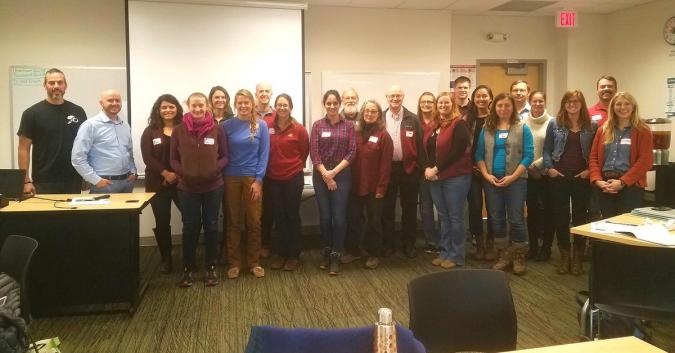Rain Gardens are yard features focused on reducing the immediate surge of storm water during rains. They also are built for filtering pollutants and providing pollinator habitat. With cost share available from many different cities and other groups, they are also growing in popularity.
 Organizations like the Easter Lake Watershed Project can provide qualifying homeowners with significant cost share. As part of the Easter Lake Watershed Project, residents, businesses, and other landowners located within the watershed are eligible for 75% cost-share for rain gardens. Contact the watershed coordinator for more information. We were actually there last week on a patio and rain garden installation, with a couple more in the wings.
Organizations like the Easter Lake Watershed Project can provide qualifying homeowners with significant cost share. As part of the Easter Lake Watershed Project, residents, businesses, and other landowners located within the watershed are eligible for 75% cost-share for rain gardens. Contact the watershed coordinator for more information. We were actually there last week on a patio and rain garden installation, with a couple more in the wings.
 Organizations like the Easter Lake Watershed Project can provide qualifying homeowners with significant cost share. As part of the Easter Lake Watershed Project, residents, businesses, and other landowners located within the watershed are eligible for 75% cost-share for rain gardens. Contact the watershed coordinator for more information. We were actually there last week on a patio and rain garden installation, with a couple more in the wings.
Organizations like the Easter Lake Watershed Project can provide qualifying homeowners with significant cost share. As part of the Easter Lake Watershed Project, residents, businesses, and other landowners located within the watershed are eligible for 75% cost-share for rain gardens. Contact the watershed coordinator for more information. We were actually there last week on a patio and rain garden installation, with a couple more in the wings. |
| Easter Lake Watershed Project Rain Garden |
I was excited the Polk County S&WCD shared some of my work on their Facebook page!
This rain garden is right in the front yard of this Waukee home. Photos include
 |
| The newly finished rain garden, |
 |
| as the native plants first take off in the summer, highlighting the armored spillway for major rains, |
You need to be quick for a photo, as the basins are designed to empty over 12-24 hours.
With a short duration of water in the basins they cannot breed mosquitoes.
With a short duration of water in the basins they cannot breed mosquitoes.
This project in Ankeny had a few challenges - many, many roots from the former tree, and to bore the downspout tile under the sidewalk.
 |
| before |
The basin was adjusted for the stump, but remained near to the original design.
 |
| Basin sculpting complete |
 |
| You can see the boulders that disrupt water flow around the inlet |
 |
| Newly Finished Ankeny Rain Garden |
 |
| Rain Garden retaining stormwater, reducing stress on municipal facilities |
I checked in with a customer in Johnston (more info) from last season for any learning opportunities about Rain Gardens to share:
The garden is looking great. In general the garden is very low maintenance, I remove weeds once I a while and had to replenish the mulch after the last big rain. I cannot tell you much about the amount of pollinators visiting because of the garden location; I guess I need to set up a little bench or something near it and watch. What I love the most it's looking at the garden after a big rain. It does gets full of water which attracts mallards in the spring (that took me by surprise) and drains slowly but by the same day is empty even in very heavy rains.Several more are currently in the works, both consultations and design and installations! If you are interested stormwater best managment practices Abundant Design can help you with your projects!
Enjoy the Fall weather!




















